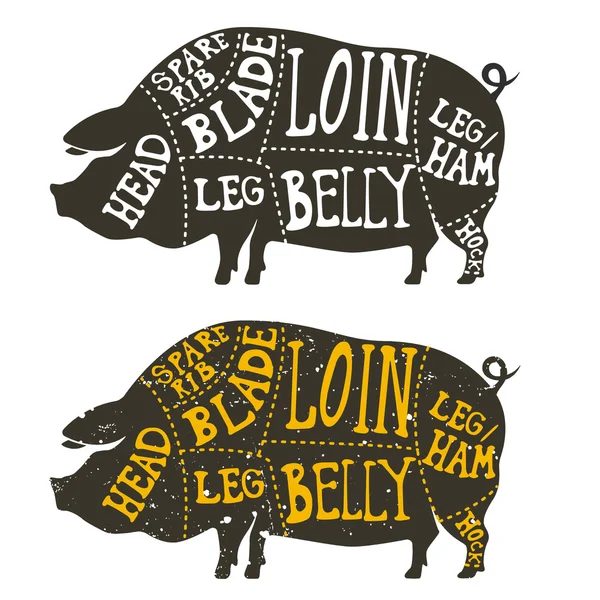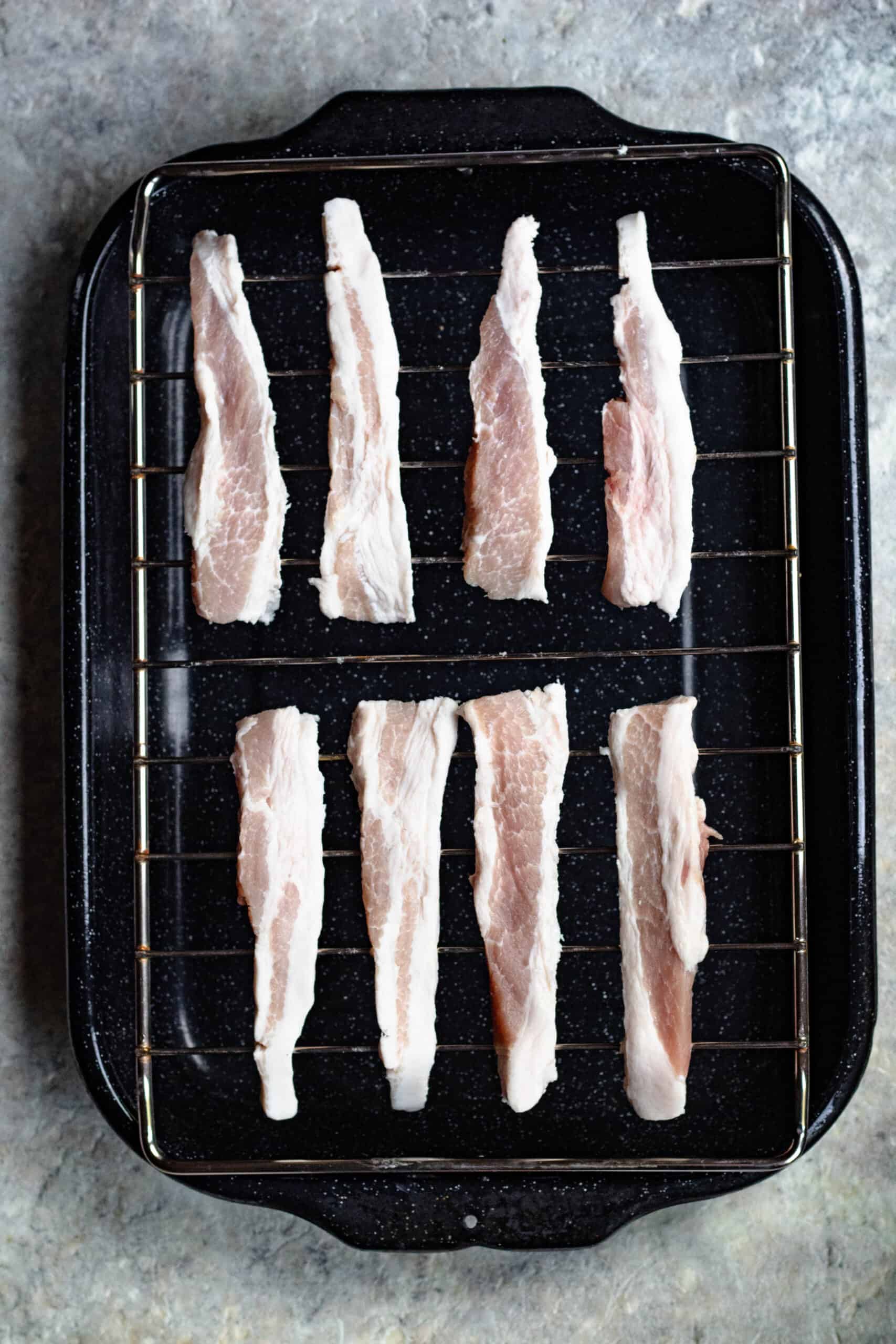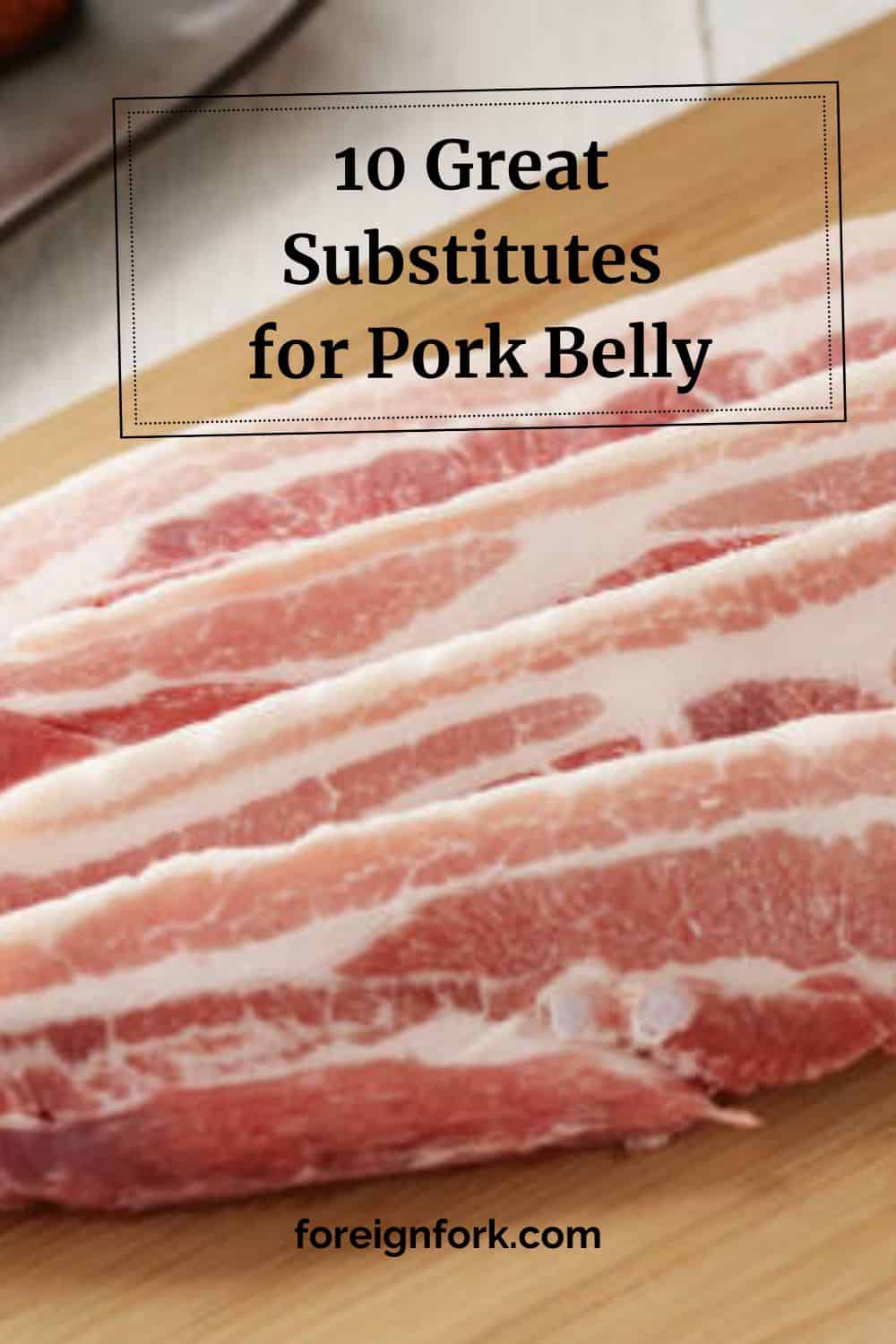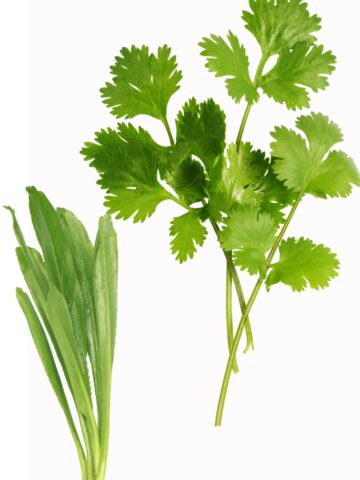Pork belly is an inexpensive, fatty piece of meat from the belly of a pig that is versatile, tender and delicious. If you don’t have access to a piece of pork belly, here are a few substitutes!

Pork belly has always been a fairly affordable cut of meat, but it seems like in the last ten years it has become more popular. Honestly, it’s a little surprising that it took so long to start showing up more in restaurants and in recipes in the United States.
Pork belly is tender, delicious, crispy and versatile. For hundreds of years it has been a popular ingredient in Asian and Hispanic cuisine, but in America it is probably used most often for bacon. When the cut of meat is cut thinly, cured, and smoked, it becomes bacon.
But even before it becomes bacon, the meat is delicious. Cooked low and slow it becomes fork tender with a salty flavor that is hard to resist.
If you’ve encountered pork belly in a recipe and are unsure how to proceed with the best pork belly substitutes, I hope this article helps with 10 great options for pork belly substitutions!
What is Pork Belly?

Pork belly is just as the name says–the belly of the pig. This boneless cut of pork is the same area that loin and spare ribs come from.
If you see pork belly whole in grocery stores, it looks like a very thick, fatty cut of meat with a thin layer of skin and plenty of fat marbled throughout. This inexpensive cut of meat has been used for centuries in Asian and European recipes to add a rich flavor to a variety of dishes.
If the meat is cured and smoked it becomes bacon, whereas if it is only salted and cured, it becomes pancetta, a popular salty meat from Italy.
What Does Pork Belly Taste Like?
When you think of pork belly you may expect it to be salty with a similar flavor to bacon, but it is actually fairly mild in flavor on its own. The real flavor from pork belly comes as the fat breaks down into the meat. Of course the meat is usually cooked very slowly with flavorful ingredients like herbs, citrus and scallions, and this adds a lot of flavor as well .
The real taste of pork belly depends on how it is prepared. It can take on some of the flavor and add depth to broth, or it can be baked, braised, sauteed, or cooked until crisp and taste a lot like thick, delicious bacon.
The flavor is slightly more mild and meatier than your typical bacon because it is not yet cured in salt. The curing process of bacon adds a slightly different flavor than you will find if you cook pork belly.
How to Cook Pork Belly
There are several ways to cook pork belly but the best result seems to come from low and slow cooking with some liquid.
Many chefs like to score the layer of fat on top and fill the tears with salt or spices. The fatty skin can be seared until crispy and then the meat can be transferred to another dish to cook at a low temperature until all the fat inside the piece of meat breaks down and the meat begins to fall apart.
Pork belly cooks well in a dutch oven, oven or when braised. While most chefs recommend slow cooking for the best flavor, the meat is not tough. You could cut it up and fry it up quickly and still have an enjoyable experience. The slow roasting just gives the fat more time to add more flavor to the dish.
The high fat content in the meat means it’s not too healthy, but it does provide amazing flavor.
Where to Purchase Pork Belly
You may not have noticed pork belly at the store before, but it’s actually not too difficult to find. You can find it in most grocery store butchers departments. If your local grocery store does not have a good selection of different cuts of meat, you can also find it online.
If you are picking out a piece of pork belly, it tends to be sold in either large bricks or slices like bacon.
How to Choose Pork Belly

When shopping for pork belly, look for a good amount of fat–about 50%. You do still want some flesh too!
The fat should be a creamy white color but not yellow or gray. The flesh should be light pink toward the top and medium pink further down the cut. The skin should be firm. The meat should not smell or appear slimy.
Once you bring it home, pork belly can be stored in the fridge for three to five days or in the freezer for up to six months. Either way, make sure it is wrapped well.
What is Porkbelly Used In?

Pork belly is traditionally used in dishes that are cooked slowly with moist heat, but it has become increasingly popular in recent years. In trendy American restaurants you may see pork belly sandwiches, pork belly in soups, or even a pork belly topping on fancy macaroni and cheese.
You can eat the meat on its own, in a sandwich, on top of a salad or on top of soup. Its strong flavor and high fat content are usually reserved for appetizers or a garnish rather than a main course in the same way that bacon is not usually served as the entree.
One exception here is the popular Danish dish, Stegt Flaesk. In this dish, Pork Belly is baked until crispy and then served alongside potatoes and a parsley sauce for a simple but scrumptious main course.
As mentioned above, the most popular use for pork belly is to make bacon. The meat is cured and smoked and the salty flavor is a breakfast favorite.
In Italy it is often made into pancetta and used to top salads or pasta.
What Are The Best Substitutes For Pork Belly?
If your local grocery store doesn’t offer pork belly for sale there are several other types of meat that are good alternatives. Here are a few of the best substitutions:
- Pork Bacon: Pork bacon is the most popular substitute for pork belly and the most readily available. It comes from the same cut of meat, so it makes sense that it would be a great alternative. It has the same high-fat content and a nice fat layer. If you are using pork bacon in place of pork belly, opt for the thickest slices you can to best replicate the texture.
- Pork Fatback: Fatback is exactly as the name sounds. It is a thick piece of fat from the back of the pig. The trouble with this substitute is there is little to no meat in fat back. It is incredibly flavorful and often used to flavor dishes but can be tricky to prepare on its own.
- Pork Shoulder: Pork shoulder cut or pork butt is usually sold in a cut that looks like a roast. It doesn’t have as much fat as pork belly, but it has nice marbling throughout and when cooked low and slow it makes excellent pulled pork sandwiches. If you are using it as a substitute for pork belly, be aware that less fat may change the way it needs to be cooked so it does not end up tough or chewy.
- Duck Meat: Duck meat has a good amount of fat that makes it a good substitute for pork belly. If you can find duck meat bacon, this would work even better.
- Goose Meat: Goose can be tough and gamey if not prepared correctly, but it has plenty of fat and great flavor.
- Beef Bacon: Beef bacon is the same as pork bacon but from a cow instead of a pig. It is a great substitute but it does have less fat than pork bacon.
- Beef Navel: Beef navel is the beef equivalent of pork belly. It is taken from the same area of the animal and is also fatty. Beef navel just contains less fat than pork belly.
- Turkey Bacon: Turkey bacon isn’t actually a great substitute, but it’s one some people will go for as a healthier alternative. It has very little fat so if you are trying to reduce the amount of fat in the dish it’s a good choice. However if you are trying to replicate the taste or texture of a dish, turkey bacon will just not taste the same.
- Tofu: If you are looking for vegan substitutes or vegetarian substitutes for pork meat, tofu will work. Tofu can be tricky to work with, especially because it comes in so many forms. All these options can be overwhelming! Tofu does a good job of soaking up the flavor of whatever it is cooked in. Just be sure to replace the fat and flavor in the recipe because tofu will not provide any.
- Soy: Soy is another viable vegan option. It can produce a better texture than tofu and feel more like eating meat.
How to Choose a Substitute
The most important advice for choosing the best substitution for pork belly meat is to carefully consider the purpose of the pork belly in your recipe. As I said in the beginning, the high fat content of pork belly makes it more of a garnish that adds flavor to many dishes. It can be enjoyed on its own, but that may not be the purpose in the recipe you are trying to prepare.
If you are making a pork belly sandwich or were hoping to turn your pork belly into bacon, purchasing pre-sliced pork bacon makes perfect sense.
If the purpose of your substitution was to cut down on fat, then goose or even turkey bacon may be better.
In many recipes, pork belly is used to add flavor and extra fat to a dish and if this is your purpose, pork back fat may be the best choice.
Perhaps you just want to avoid eating pork and would prefer a different animal. In this case beef or the vegan options mentioned are good substitutes.







Rusty H, says
Okay. I can’t find pork belly, but I can find pancetta tesa. I can’t seem to find a recipe for pancetta tesa as a substitute fort pork belly. Any suggestions?